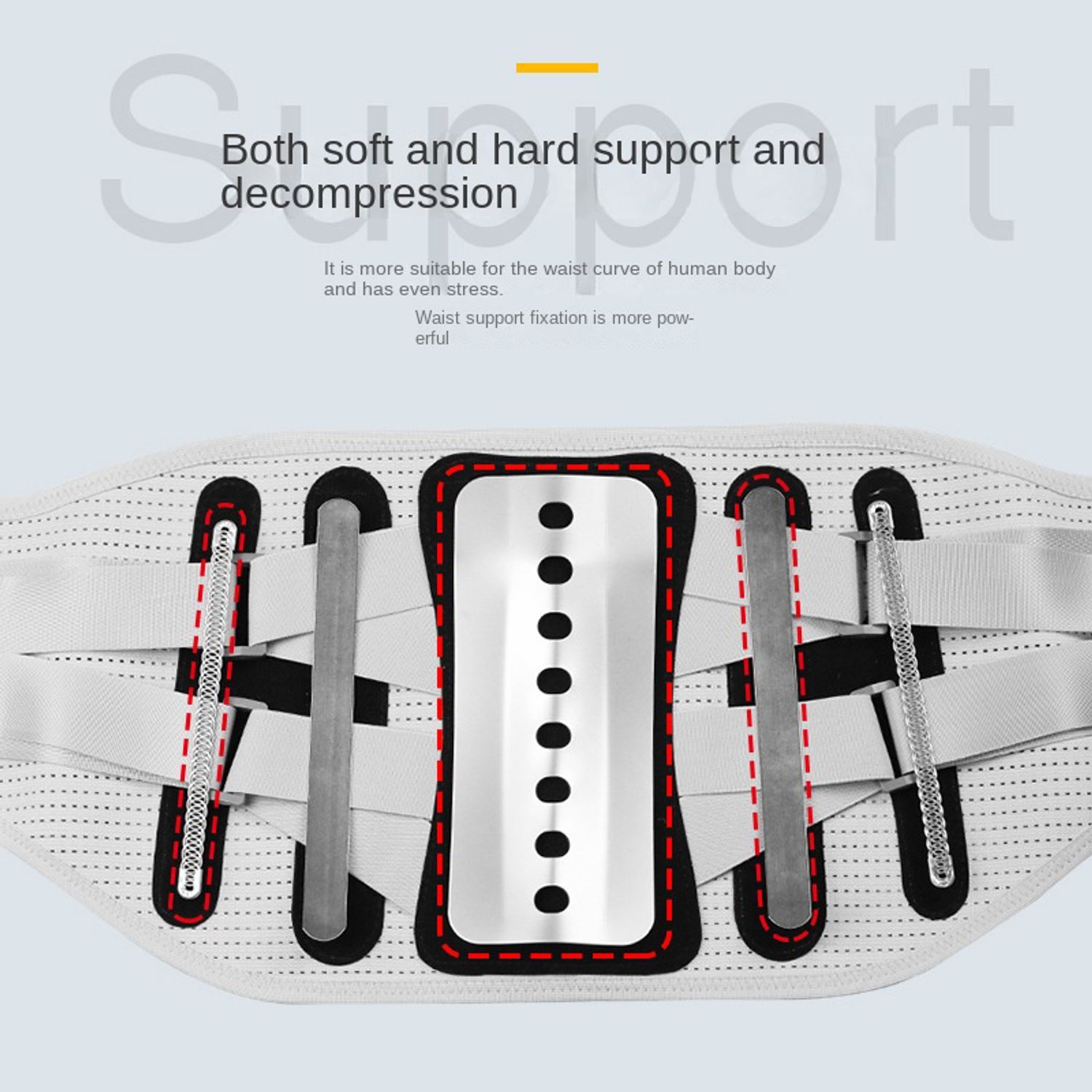john@lee-mat.com
+86-13510662576

GET QUOTE
How Long Should You Wear a Posture Support?
Maintaining a proper posture is essential for overall health and well-being. For those struggling with back pain or poor posture, a back-posture corrector can be a game-changer. But how long should you wear a posture support to see the benefits without causing harm? In this article, we'll explore the appropriate duration for wearing posture correctors, the benefits of using them, and how to maximize their effectiveness, all while discussing the importance of waist support for back pain.
Understanding Posture Support
What is a Back-Posture Corrector?
A back-posture corrector is a device designed to help individuals maintain a proper spinal alignment by gently pulling the shoulders back and keeping the spine straight. It’s often used by people who experience back pain due to prolonged sitting, slouching, or other factors that lead to poor posture.
These correctors come in various forms, including braces, belts, and straps. Some are designed to be worn around the upper back, while others provide waist support for back pain, ensuring that the lower spine stays in a healthy alignment as well.
Why is Posture Important?
Posture plays a crucial role in overall health. Poor posture can lead to chronic back pain, neck pain, and even headaches. It can also contribute to decreased lung capacity, digestive issues, and fatigue. Correcting your posture with a back-posture corrector can alleviate these problems, improve confidence, and enhance physical appearance.
How Long Should You Wear a Posture Corrector?
Initial Adjustment Period
When first starting with a back-posture corrector, it's important to ease into it. Begin by wearing the device for 15 to 30 minutes a day. This initial period allows your body to adjust to the new posture without causing strain or discomfort.
Gradual Increase
As you become more accustomed to the posture support, gradually increase the duration by 15-minute increments each week. Most experts recommend wearing a posture corrector for 2 to 3 hours a day. This duration strikes a balance between giving your muscles a break and providing the necessary support to correct posture.
Maximum Duration
While it may be tempting to wear a posture corrector all day, it’s important not to overuse it. Prolonged use can lead to muscle dependency, where your muscles may weaken because they are not being used to hold your posture naturally. The goal is to retrain your muscles, not replace their function entirely. Therefore, the maximum recommended duration for wearing a posture corrector is about 4 hours a day.
When to Wear a Posture Corrector
Timing is everything when it comes to posture correction. Here are some key moments when wearing a back-posture corrector or waist support for back pain can be particularly beneficial:
- During Sedentary Activities: Wear your posture corrector while sitting at your desk, watching TV, or driving. These are times when slouching is most likely to occur.
- While Exercising: Certain activities, such as weightlifting or running, can strain your back if done with poor posture. Wearing a posture corrector during these activities can help maintain proper alignment and prevent injuries.
- At Work: If your job requires long hours of sitting or standing, a posture corrector can provide the necessary support to keep your spine aligned throughout the day.
Benefits of Using a Posture Corrector
Alleviates Back Pain
One of the most significant benefits of using a back-posture corrector is the alleviation of back pain. By keeping your spine in a neutral position, these devices reduce the strain on muscles and ligaments, helping to prevent and relieve discomfort.
Improves Confidence and Appearance
Good posture is often associated with confidence and a positive appearance. When you stand tall with your shoulders back, you not only look more confident but also feel more self-assured. A posture corrector can help you achieve this effortlessly.
Enhances Muscle Memory
Wearing a posture corrector regularly helps your muscles develop the memory needed to maintain proper posture even when you're not wearing the device. Over time, this can lead to lasting improvements in posture and a reduced need for the corrector.
Supports Rehabilitation
For those recovering from injuries, a posture corrector can provide essential support during the rehabilitation process. It ensures that the spine stays in the correct position, reducing the risk of re-injury and promoting faster healing.
Choosing the Right Posture Corrector
Types of Posture Correctors
There are various types of posture correctors available on the market, each catering to different needs:
- Upper Back Braces: These are designed to pull the shoulders back and align the upper spine.
- Full Back Braces: These offer support to both the upper and lower back, providing comprehensive posture correction.
- Waist Support Belts: Ideal for those suffering from lower back pain, these belts offer waist support for back pain and help maintain a neutral spine position.
Material and Comfort
When choosing a posture corrector, consider the material and comfort. Look for breathable fabrics that won’t irritate your skin, and ensure the device is adjustable to fit your body comfortably.
Size and Fit
A proper fit is crucial for the effectiveness of a posture corrector. Most brands offer various sizes, so measure your chest and waist to ensure you select the right size. An ill-fitting corrector can cause discomfort and may not provide the necessary support.
Tips for Maximizing the Effectiveness of Posture Correctors
Combine with Exercises
Wearing a posture corrector is just one part of the solution. To maximize its effectiveness, incorporate exercises that strengthen the muscles responsible for maintaining good posture. Focus on exercises that target the core, back, and shoulders.
Practice Good Ergonomics
In addition to wearing a posture corrector, practice good ergonomics in your daily activities. This includes adjusting your workstation, sitting with your feet flat on the floor, and keeping your computer screen at eye level. Proper ergonomics complements the use of a posture corrector and helps maintain posture throughout the day.
Listen to Your Body
While a posture corrector can be incredibly beneficial, it’s important to listen to your body. If you experience discomfort or pain while wearing the device, reduce the duration and consult a healthcare professional if necessary. Your body will tell you when it needs a break or if adjustments are needed.
Conclusion
Wearing a back-posture corrector is a practical and effective way to improve your posture and reduce back pain. By starting with shorter periods and gradually increasing the duration, you can retrain your muscles and develop better posture habits over time. Remember to combine the use of posture correctors with regular exercises, proper ergonomics, and by paying attention to your body’s needs.
When choosing a posture corrector, quality and comfort are key. That’s where Lee-Mat comes in. At Lee-Mat, we offer a wide range of high-quality posture correctors and waist support products designed to provide optimal support and comfort. Our products are made from breathable materials and are designed with your long-term health in mind. Whether you’re looking to alleviate back pain, improve your posture, or support your recovery, Lee-Mat has the perfect solution for you. Choose Lee-Mat and take the first step towards a healthier, more confident you.


